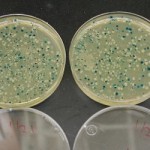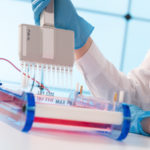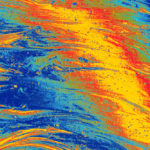DNA / RNA Manipulation and Analysis
CRISPR Genome Editing: What You Need to Know to Get Started
Get some ideas on what CRISPR can do for you and what using it involves.
Read MoreSix Facts About Restriction Enzymes
When restrictions come in the form of paperwork and approvals, we detest them. Whereas, when the restrictions come in the form of enzymes, we love them, don’t we? Restriction enzymes play a key role in biotechnology research. Read ahead for six useful facts about restriction enzymes. 1. Restriction enzymes are helpful to bacteria Restriction enzymes…
Read MoreWhy Aren’t My NanoDrop Results Reproducible?
Three Important Things to Check After Obtaining Your Plasmid
You have a new plasmid, now what do you do? You are excited to go further with your project. But before you can move on, you have to confirm the presence of your insert as well as the sequence and orientation of the insert. Is the insert the right size? Most people use restriction enzymes…
Read MoreHow to Fix Your Bad Cloning Ratios
You open the incubator in the morning and to your dismay there are a hundred glorious colonies… on your vector-only control plate. While there are a number of potential causes, I’ll highlight a few of the more likely culprits and their solutions.
Read MoreBaby Got BAC – Working with Bacterial Artificial Chromosomes
While they may not be as in demand as when they were the basis of sequencing projects, bacterial artificial chromosomes (BACs) are still used for a wide variety of projects. Based off of the F origin of replication, BAC vectors can stably maintain up to 300 kb of sequence in a single plasmid, lending themselves…
Read MoreHow To Get The Best cDNA For Gene Isolation
What is cDNA? …and how do you choose the right tissue to make a cDNA for isolating your gene of interest? Here’s what, and how.
Read MoreFast-track your Ampicillin Plasmid Transformations
Most of us use pretty standard transformation protocols for E.coli. Yours probably goes something like this: – Thaw the competent cells on ice – Add DNA – Electroporate (or incubate then heat shock for chemically competent cells) – Add rich medium (LB or SOC) – Incubate at 37°C (or appropriate temperature) for 30-60 minutes –…
Read MoreSeamless Ligation Cloning Extract (SLiCE) Explored and Explained
Traditionally, if you’re hoping to clone a DNA/RNA fragment (or insert) into a vector, such as a BAC you would need: Expensive exonucleases, called restriction enzymes: pacman-like enzymes that chomp at specific sequences in your destination vector or fragments to be inserted (often just “inserts”). Sequence homologies between your inserts and your destination vector, called…
Read MoreGene Synthesis: Cloning of The Future?
I remember the time when elves and wizards walked the Earth and DNA oligonucleotide synthesis was $5 a nucleotide. But the world has changed, nobody thinks twice about ordering an oligo. Whole gene synthesis, which is synthesis of long oligos and their assembly into a very, very long oligo. With prices of around 25–35 cents per…
Read MoreUnderstanding Plasmid Incompatibility
Welcome to the last article in the series on E. coli origins of replication where we will touch upon plasmid incompatibility! This is a broad and complicated topic so we will mainly focus on points that might be relevant for you in the lab. What is Plasmid Incompatibility? Plasmid incompatibility is usually defined as the…
Read MoreBanish the Background with Toxin–antitoxin Cloning Systems
One of the most annoying traits of “classical cloning” is an imperfect system of discriminating between the clones containing an empty vector and vector with insert after cloning. Even when your self-ligation control plate is empty, you can have a lot of colonies containing an empty vector on the “vector + insert” plate. Even the blue-white…
Read MoreLetting Go of Your Ligase: Transfer PCR
When I buy a new sweater, I love finding out that it goes with several pairs of pants, the scarf that’s an awkward color and the earrings I haven’t worn yet. PCR is like this sweater – it goes with almost everything and molecular biology is taking full advantage of this using it at every…
Read MorePimp Your Plasmid Growth Medium
I often wonder why it is that molecular biology researchers stubbornly refuse to change 4o-year old methods that, while work, are not as good as newer, faster and cheaper methods out there. I suppose rational scientists often have irrational superstitions. One example of an old method that could be improved is the growth media used…
Read MoreSay Goodbye to Restriction Enzymes and Ligases: An Introduction to Sequence and Ligase Independent Cloning (SLIC)
SLIC, or sequence and ligase independent cloning, was developed by Li in 2007 and published in Nature Methods. What makes it a Nature Methods worthy protocol? Unlike other forms of cloning, SLIC does not require restriction enzymes or a ligase! Seriously! Don’t believe me? Why not have a go for yourself? I’ve detailed the main steps below to get you started. How it works To…
Read MoreDressing Up Your Oligonucleotide
Oligonucleotides are those smallish bits of DNA or RNA that we rely so heavily on for many of our molecular biology experiments. In their naked form, they are single, inert strands of DNA or RNA bases. But if you dress them up, you can increase their functionality. Here are some of the common oligo wardrobe…
Read MoreAssembling the Puzzle: Cloning with Compatible Cohesive Ends
Consider a jigsaw puzzle. While most of the pieces have a different picture on their surface, all pieces fit together in an interlocking pattern. As unlikely as it may seem, restriction enzymes from different organisms can produce interlocking pieces of DNA – so called compatible cohesive ends (CCE). These are pieces of DNA, which fit…
Read MoreA DIY Method for Isolating Yeast Genomic DNA
Look Ma, No Kit! Unlike with kits, there are no propriety reagents in a DIY protocol. You know what exactly is in each reagent. The DIY approach is catching on!
Read MoreOverlap Extension PCR Cloning
If efficient cloning is what you are after, you must give Overlap Extension PCR Cloning a go! This restriction enzyme and T4 DNA ligase-free technique is faster, more reliable and easier to troubleshoot than traditional restriction methods. With only two PCR reactions required, you can insert a DNA fragment into a plasmid without spending time…
Read MoreDpn I The Strange
If you ever used a site-directed mutagenesis kit or ligation-independent cloning, then you also used restriction enzyme Dpn I. But what does it do and more interestingly, why? Restriction enzymes and methylases: the yin and yang of bacteria Usual restriction enzymes, the toolkit of genetic engineering, are one half of the “yin and yang” pair…
Read MoreType IIS Endonucleases – When Nature Lends a Hand With DNA Cloning
Good news lab workers! Always hated the tedious work of designing a cloning strategy? Or maybe always dreamed of pooling all the reactions in one tube, just to save time? Thanks to Mother Nature, and her wonderful type IIS endonucleases, this is now possible! What is this wonderful enzyme? Type II enzymes are one of…
Read MoreShooting Trouble During Cloning
As frustration goes, cloning is often up there with trying to thread a camel through the eye of a needle. You do everything carefully: prepare your vector and fragment DNA, cut them as the restriction enzyme manufacturer instructs (complete digest in five minutes!), ligate, transform and go home in anticipation of a good number of…
Read MoreShould PCR cloning be a part of your molecular cloning toolkit?
While the classic approach to molecular cloning – using restriction enzymes to excise a DNA fragment of interest – is as useful as ever, new techniques that make cloning faster, easier and more versatile are available. As a smart molecular biologist, you should be examining each of them to see whether or not adding them…
Read MoreThe Magic Continues: TOPO Cloning
They say a magician is never supposed to tell the secret behind his tricks. It’s a good thing then that I am a molecular biologist and not an illusionist. Because once I learn a good trick, I feel the need to spread it like dandelion seeds floating on a breeze. That’s what inspired me to…
Read MoreWhen Glycogen is not Your Friend – Isolating RNA from Glycogen-Rich Tissues
Bitesize Bio has had a lot to say about RNA isolation, mainly because it is one of the most anxiety-producing requirements for molecular biology; especially when you are first starting out (although isolating proteins from complex samples like soil and stool is far more difficult, let me tell you. But that’s a future post.) We’ve…
Read MoreTroubleshooting RNA Isolation
As widely used as it is, isolating RNA remains one of the more finicky protocols. Just about anyone who has performed the technique has their own personal tips and tricks to successfully isolate intact RNA from their samples with consistency. Although RNA can be somewhat unpredictable since it is so labile, there are a few…
Read MoreTa-Da! The Magic of Taq and TA Cloning
Sometimes a clever little trick for cloning comes along that makes you just give an appreciatory “ahhh.” For me, it was TA cloning. TA cloning is not a new technique (I am showing my advanced laboratory age here), but when I discovered it, the simple elegance of the technique made me pause and wonder about…
Read MoreGibson Assembly: an easy way of molecular cloning!
Every hard-core biologist knows designing the perfect construct can be a complex puzzle to solve. This challenge, if successful, can be extremely satisfying but can also drive you crazy for weeks. Luckily, Dr. Daniel Gibson and his colleagues at the J. Craig Venter Institute designed a new easy-to-use cloning method. Better yet, this system allows…
Read More10 ways to improve blunt-end ligations
Blunt-end cloning involves the ligation of DNA fragments – usually between a plasmid vector and an insert – whose terminal ends are not “sticky”. Performing these ligations is notoriously difficult, particularly with large DNA fragments. But it is possible. And in this article I’ll give you some tips that I hope will increase your chances…
Read MoreChoosing the right plasmid vector: A Guide for beginners
If you’re picking up a list of available plasmid vectors for the first time, it can be mind-blowing to decide on the best one for your experiment. What cloning sites do you need? What restriction enzyme sites? What insert size is possible? Let me help you with some pointers about what factors to look out…
Read MoreDIY Phase Separating Gel: Clean and Cheap!
Learn from my adventures, save yourself some money and enjoy the nice phase separations. Follow this simple protocol for making a clean and cheap DIY phase separating gel.
Read MoreA Brief Survey of Plasmid Mapping and DNA Annotation Software
Plasmid mapping and DNA annotation software is pretty abundant these days. A quick Google search brings up dozens of hits – but how do you know which one to use? If you are like most molecular biologists, you probably use the same software your colleagues do—usually it is either the stuff that gets passed down…
Read MoreHow to detect long non-coding RNA (lncRNA)
According to the central dogma of molecular biology, DNA is transcribed into RNA, that is translated to proteins. Inconveniently, the vast majority of the genome contains sequences that do not actually code for proteins. So, this non-coding RNA (ncRNA) was dismissed as non-functional junk, letting researchers tick the box on their to-do lists and head off…
Read MoreEasy Yeast RNA isolation without the Trizol
Recently BsB author Yevgeniy Grigoryev shared a total RNA isolation protocol. The one I use is even simpler—no expensive Trizol, which is a mix of phenol and some salts, all that is required is some Tris, SDS and phenol/chloroform mix. I have never used this protocol on non-yeast cells but I am almost sure that…
Read MoreHow to properly analyze and troubleshoot DNA sequencing results
As part of my job ensuring plasmid quality at Addgene, I analyze 50-100 sequencing reactions a week. So I have developed some good habits that I wanted to pass on to you to make sure you are getting the most out of the data you get back from your sequencing runs. The most important of…
Read More5 Ways to Really Screw Up Your RNA Prep
Unlike DNA, which can last for eons, RNA is a fragile and degradation-prone cousin. After working with RNA for a while, one becomes quite paranoid about handling RNA because even a single sneeze or drop of saliva can potentially affect your results. The reason is that there are enzymes called RNases that specifically target and…
Read MoreCell lysis 101: 5 types of cell walls you need to understand
Did you ever encounter resistance from a mammalian cell line when trying to extract the contents? Probably not, because destroying cell membranes is easy. Cell walls, however, are a different story. They are rigid, protective layers that can be so strong that the organism gives up movement in favor of protection! Cell walls exist in…
Read MoreCrush Like an Elephant, Soak Like the Rain: Old-School DNA Gel Extraction
In my previous article on DNA gel extraction, I explained how most commercially available DNA gel extraction kits work. However, there was a time before our society was blessed with these convenient marvels of technology and scientists had to summon the gods of “Crush and Soak”. This method has been proven for millennia, as people…
Read MoreHow DNA Gel Extraction Works
Isolating pure DNA is key to many downstream applications for molecular biologists. Isolating large quantities of pure DNA used to be a laborious task. But thanks to commercially available kits, older methods have been streamlined to allow efficient recovery of pure DNA. In this article, I will talk about a method called DNA gel extraction,…
Read MoreHow Measurement of Concentration and Purity of Nucleic Acids Works, Part I
So you’ve isolated your DNA or RNA from your favorite sample. And now, if you are anything like me, the first thing you’ll do is scramble to check the quality and concentration of your extract. You have a few different options at your disposal to perform this crucial analysis, which will let you know whether…
Read More

































